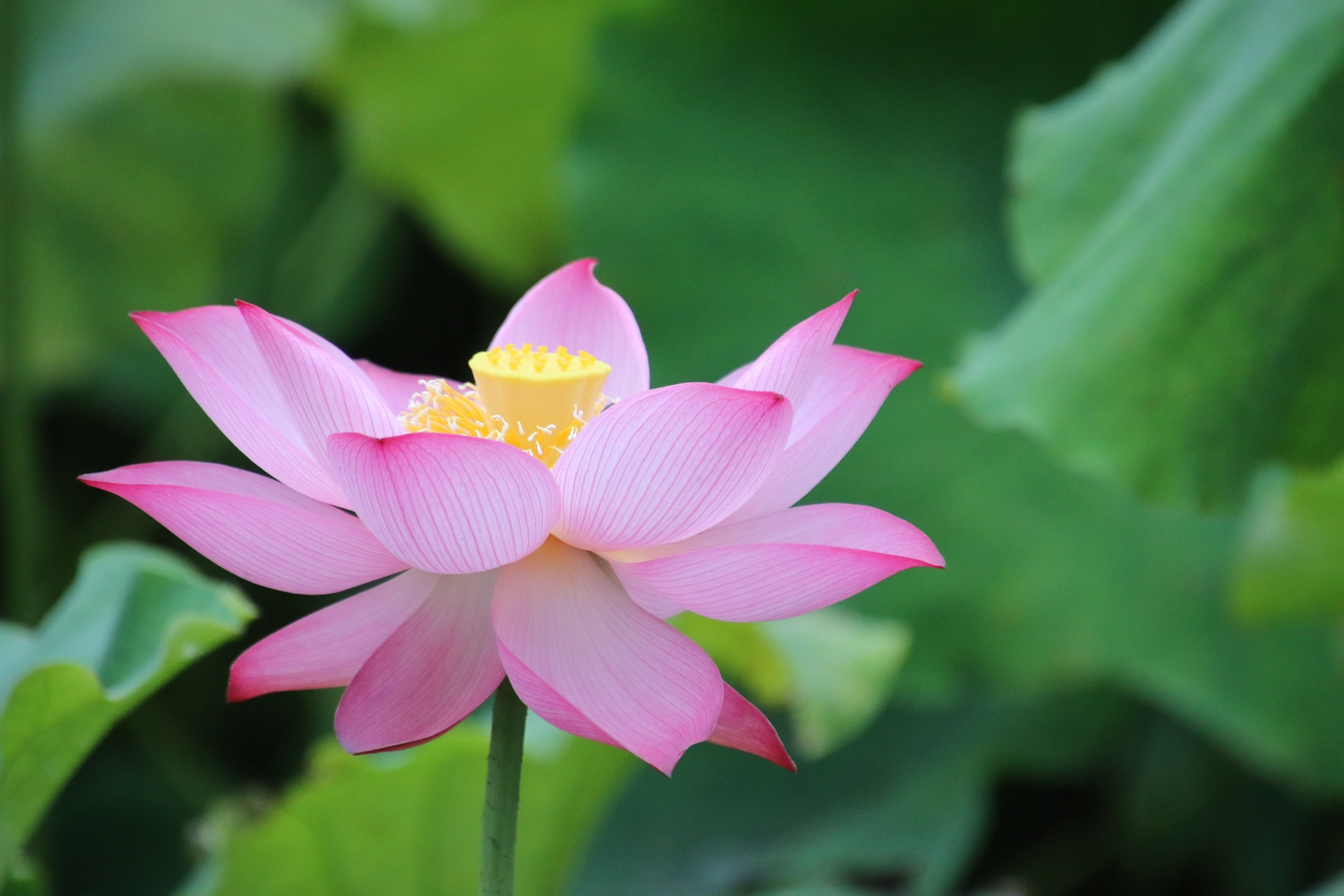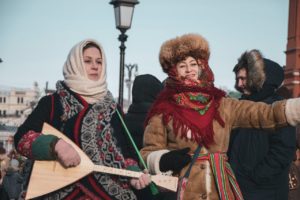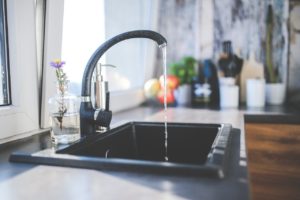Photo by Eric Wang on Unsplash
In this post we’ll learn some basic Korean vocabulary and grammar that you can use to describe things.
무슨 색입니까? museun saeg-imnikka? What color is it?
Let’s start with colors. You’ll see two forms. The first one is the form you’d use right before a noun (a black dog), and the second one in parentheses is the form you’d use with be in English: the dog is black. More on that in the grammar note below! 검은 geomeun (검다 geomda, 검은색이다 geomeunsaeg ida) black; 흰 huin (하얗다 hayada, 흰색이다 huinsaeg-ida) white; 빨간 ppalgan (빨간색이다 ppalgansaeg-ida)red; 파란 paran (파란색이다 paransaeg-ida) blue; 노란 noran (노란색이다 noransaeg-ida)yellow; 녹색 nogsaek, 초록색 chorogsaeg (녹색이다nogsaeg-ida, 초록색이다 chorogsaeg-ida) green; 갈색 galsaek (갈색이다 galsaek-ida) brown; 회색 hoesaek (회색이다 hoesaek-ida) gray.
- 개는 검다. 우리는 검은 개가 있어요.
gae-neun geomda. uri-neun geomun gae-ga isseoyo.
The dog is black. We have a black dog. - 고양이는 하얗다. 흰 고양이가 있어요.
goyangi-neun hayada. huin goyang-iga isseoyo.
The cat is white. I have a white cat.
- 우리 차는 파란색이다. 우리는 파란 차가 있어요.
uli cha-neun paransaeg-ida. uli-neun palan cha-ga isseoyo.
Our car is blue. We have a blue car. - 꽃은 빨간색이다.
kkoch-eun ppalgansaeg-ida.
The flower is red.
GRAMMAR TIP! When you use adjectives in Korean, there are two important things that you should keep in mind. First, adjectives in Korean are verbs. That means that you don’t need a form of be to say something like “the dog is black” or “the cat is white.” Instead, you say something like “the dog blacks” or “the cat whites,” because black and white in Korean are verbs. They even have tense! “the flower redded” means “the flower was red.” If you’re a fan of grammatical terminology, this use of an adjective is called predicative.
Second, if you want to use an adjective right before a noun (an attributive adjective, if you like grammatical terminology), you need to use a special form of the adjective/verb ending in –은 –eun or -ㄴ -n. For example, you’d use the full verbal forms 검다 geomda (to be black) or 하얗다 hayada (to be white) after a noun to form a full sentence, but the forms 검은 geomeun (black) or 흰 huin (white) right before a noun, as in:
- 개는 검다. 우리는 검은 개가 있어요.
gae-neun geomda. uri-neun geomun gae-ga isseoyo.
The dog is black. We have a black dog. - 고양이는 하얗다. 흰 고양이가 있어요.
goyangi-neun hayada. huin goyang-iga isseoyo.
The cat is white. I have a white cat.
And don’t forget that Korean verb-adjectives have all the same honorific forms as any verb: 검어 geomeo, 검어요 geomeoyo, 검습니다geomseumnida, and so on.
Finally, notice that you often use the word for color (색 saeg) when talking about colors. But you can drop it with black, white, blue, red, and yellow when the color comes before the noun (when it’s used attributively.)
아주 좋아요! aju johayo! Very good!
Now let’s look at several other important basic adjectives: 좋은 joheun (좋다 johda) good; 나쁜 nappeun (나쁘다 nappeuda) bad; 큰 keun (크다 keuda) big; 작은 jageun (작다 jagda) small; 아름다운 areumdaun (아름답다 areumdapda) beautiful; 못생긴 motsaenggin (못생겼다 motsaengyeotda) ugly; 오래된 oraedoen (오래된 것이다 oraedoen geosh-ida ) old; 새로운 saeroun (새 것이다 sae geosh-ida) new; 긴 gin (길다 gilda) long; 짧은 jjalpeun (짧다jjalpda) short; 높은 nopeun (높다 nopda) high; 낮은 najeun (낮다 natda) low; 빈 bin (비었다 bieotda) empty; 가득한 gadeukhan (가득하다 gadeukhada) full; 넓은 neolpeun (넓다 neolda) wide; 좁은 jobeun (좁다 jobda) narrow; 단단한 dandanhan (단단하다 dandanhada) hard; 부드러운 budeureoun (부드럽다budeuleopda) soft; 어려운 eoryeoun (어렵다 eolyeobda) difficult; 쉬운 shwiun (쉽다 shwipda) easy.
- 이 식당은 좋다/나쁘다.
i sigdang-eun johda/nappeuda.
This restaurant is good/bad. - 좋은 식당이에요.
joheun shigdang-ieyo.
It’s a good restaurant. - 나쁜 노래예요.
nappeun norae-yeyo.
This is a bad song. - 이 영화는 오래되었다. 이 영화는 새영화다.
i yeonghwa-neun olaedoeeotda. i yeonghwa-neun saeyeonghwada.
The film is old. The film is new. - 도시는 아름답다 / 크다.
doshi-neun aleumdabda / keuda.
The city is beautiful/big. - 길은 넓다 / 좁다.
gil-eun neolbda / jobda.
The street is wide/narrow. - 침대가 딱딱하다 / 부드럽다.
chimdae-ga ttagttaghada / budeuleobda.
The bed is hard/soft. - 잔이 가득 찼다 / 비었다.
jan-i gadeug chatda / bieotda.
The glass is full/empty.
GRAMMAR TIP! 오래된 oraedoen and 새로운 saeroun (also just 새 sae) don’t have full verbal forms that are typically used. So if you want to say X is old/new, you usually say X is an old thing/a new thing using 것 geot: 오래된 것이다 oraedoen geosh-ida or 새 것이다 sae geosh-ida.
Learn Korean with the Language Garage
Check out our other posts on Korean language, culture, and more. And if you’re looking for convenient and affordable live Korean lessons with a real teacher, check out The Language Garage. Our lessons are given online in a virtual classroom, so it doesn’t matter where you live or work – we can come to you. And we have flexible options, with a free trial so that you can decide if there’s a fit. Check us out!





